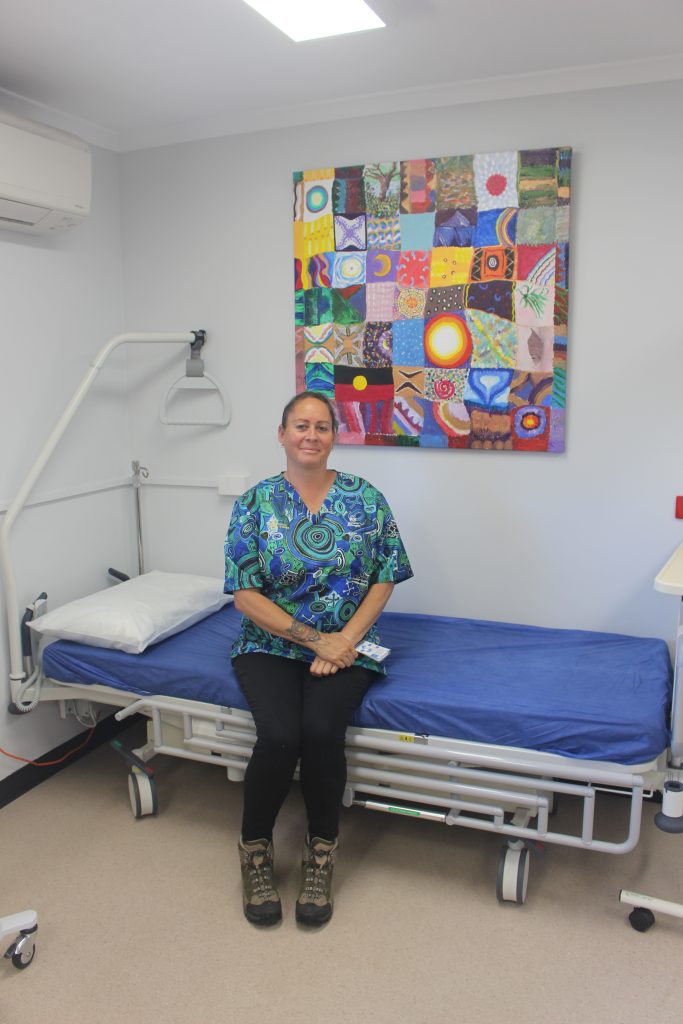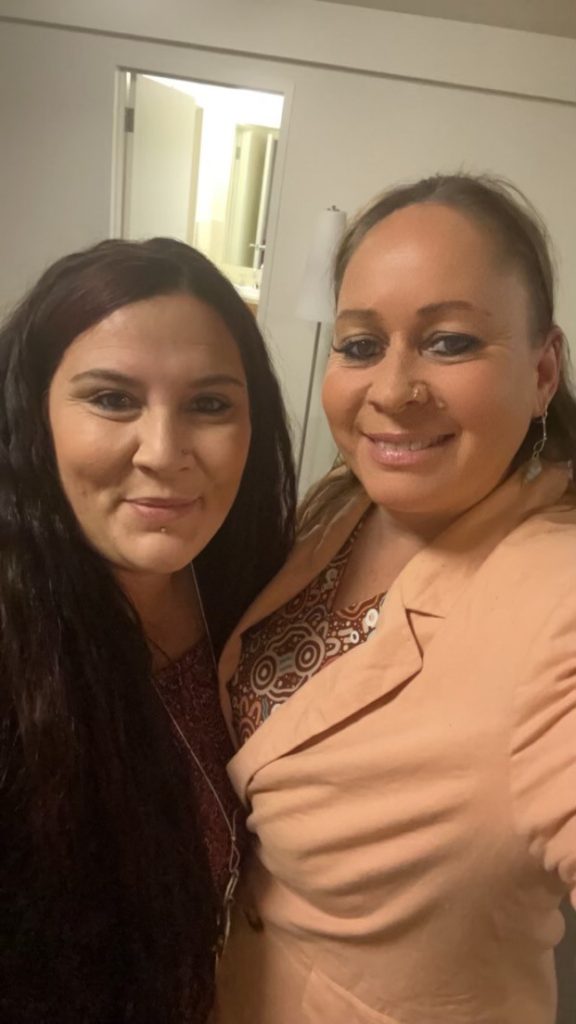How Aboriginal health workers are going beyond tokenism
Posted on August 8, 2024

How truwana/Cape Barren Island’s health professionals work together for cultural safety and to improve Aboriginal health outcomes
truwana/Cape Barren Island is a remote island located in the wild waters of Tasmania’s Bass Strait.
The island is home to a close-knit community with deep Aboriginal heritage and cultural ties, with many of the islands’ residents identifying as Aboriginal.
The cultural awareness and safety in practice in truwana’s health service goes far beyond tokenism and is a great example for the rest of Tasmania.
Cultural tokenism is a merely symbolic act that gives the impression of inclusiveness or cultural awareness and is only surface level.
Avoiding this means engaging in a meaningful way, understanding the significance of symbols and practices, and safeguarding strong links with the community. Aboriginal health workers have a key role in ensuring this.
In early 2023, the Tasmanian Health Service, which operates the Cape Barren Island Health Centre, employed two Aboriginal health workers to provide cultural safety and a link to more mainstream health professionals, and assist with the running of the nurse-led clinic.
They work closely with the island’s other health and aged care workers, including those at the Cape Barren Island Aboriginal Association..
Aboriginal health workers perform a variety of tasks, such as coordinating care and logistics for people when they go off island for emergencies or specialist appointments, administrative tasks involved in the running of the clinic, patient transport, health promotion, and providing on-the-ground logistical support with telehealth appointments.
Once they have completed the relevant training, the Aboriginal health workers can also perform tests such as blood tests and eye checks.
The health professionals on truwana are a shining example of how a team can come together and co-create cultural safety and be led and taught by members of the Aboriginal community themselves.
The 2021 Census indicates that truwana has 64 residents, many of whom have with complex and specific needs.
The small community health centre is staffed by one registered nurse and one Aboriginal health worker at a time, and receives weekly GP visits and telehealth appointments from medical staff on Flinders Island, a 15-minute small plane flight away.
Luana Towney and Shannon Scown are the current Aboriginal health workers on truwana, and being members of the Aboriginal community themselves means that they live and breathe cultural safety. Luana lives with her family on truwana, and Shannon flies in from her home from Flinders Island, working for one week on-call per month.
“I think it really helps having Aboriginal health workers here because it hopefully encourages more people to feel safe and confident in their health care and will encourage them to come into the clinic to get their health checks,” Luana says.
Luana is an Aboriginal artist as well as a health worker and has her art on display in hospitals and health centres around Tasmania.
“Hospitals are so institutionalised and lots of bad things have happened to Aboriginal people in hospitals,” she says. “This can create a lot of trauma for people.
“There also is inherited trauma, which is trauma that has been passed down generations from terrible things have happened in hospitals. Lots of people don’t trust the system anymore.
“So, for people to come into a hospital and see Aboriginal artwork on the walls, hopefully it makes them feel a little bit safer, a little bit more welcomed and not so frightened.
“Hopefully it removes the anxiety to go in and do whatever they need to do in there. Whether it’s visiting people or having check-ups or operations.”
Luana says more can be done.
“It’s culturally safe to have a choice of male and female health professionals, which is why it’s really good when the doctors come over that there’s a male and a female that alternate,” she says.
“But I would really like a male Aboriginal health worker to come over, which we don’t have at the moment.”
Dr Alex John is a GP who lives on Flinders Island and is part of a team of three GPs who support truwana residents.
They all agree that having the Aboriginal health workers on the island is making a real difference on the ground.
“They are part of the community and have been trained to be health workers,” says Alex.
“They’re part of taking ownership of their health.
“It’s really helped to connect us with the community, having people from there, working there.
“Having Aboriginal health workers as part of the team has really helped break down some of the barriers. It’s less like ‘us and them’.”
For the health professionals who work across both Flinders Island and truwana, there is a continuous focus on and commitment to culturally safe practices.
There are many ways they practise cultural awareness, including displaying Indigenous artwork on the walls of the health centre to make the services feel safer for Aboriginal people.
“If we have an event, we’ll have Elders who come in and give a Welcome to Country,” Alex says.
“The staff at the hospital have Aboriginal art on their clothes, which helps them seem more approachable and less clinical.”
Shannon Scown says there has been a huge benefit to the Aboriginal community since the Aboriginal health workers were employed.
“I think for the community, our role has been amazing, to be a voice for our community and for their health,” she says.
“The community has engaged with the clinic a lot more since we’ve been here.
“We’ve been able to talk and make them feel more comfortable and like there’s no question too shameful to ask. And if they do feel ashamed, at least we’re there to help.
“We’re there to have a yarn with them, particularly if they say ‘oh my god I don’t want to go speak to the nurse’.
“It’s amazing to see it to start up from ‘what does this vision look like for us and our community’ to seeing it all in action.
“We’re seeing that the community are so proactive in their health now.”
Shannon says an important part of cultural safety is being aware of the impact of past trauma.
“My great grandfather and Nan were from truwana” she says. “So, to have us in this role, I think the commmunity feels confident with us being their voice and being proactive.
“I remind non-Indigenous staff to be culturally aware and understand that we are paving the way for our community to have better health outcomes, better health promotion, better health engagement.
“I remind them to just know that there is a lot of past trauma, especially in Tassie, that we may have forgotten about. It’s still very real and raw.
“It’s been an amazing job and role to be in.”
Alex believes more health professionals should implement culturally safe practices in their organisations.
“It’s not that difficult to do really,” he says.
“We only began working with the Aboriginal health workers since the beginning of last year, but it’s been hugely successful. If other places could copy that, that’d great.”
This story features in Issue 18 of our Primary Health Matters magazine. Click here to read the rest of the issue.

